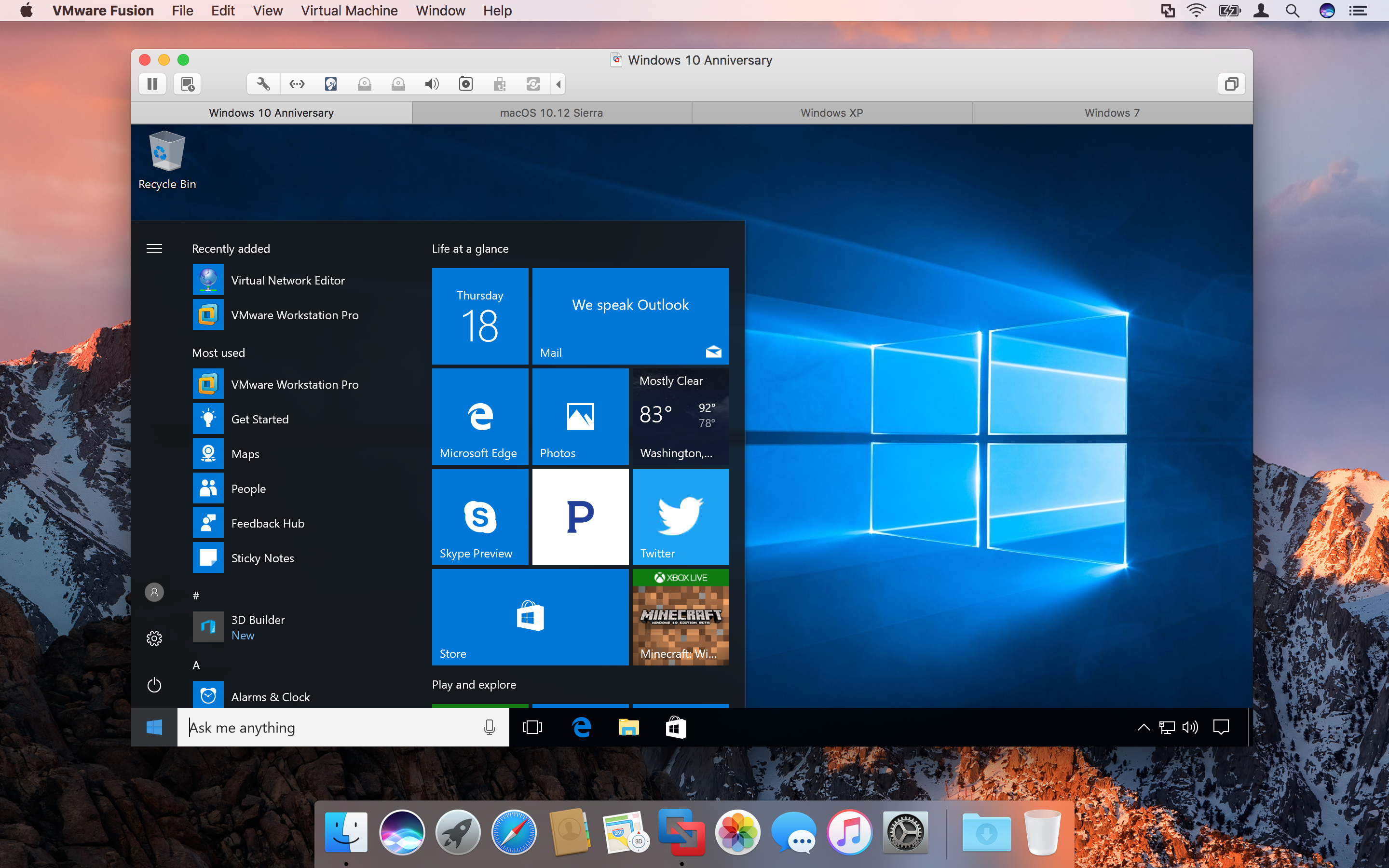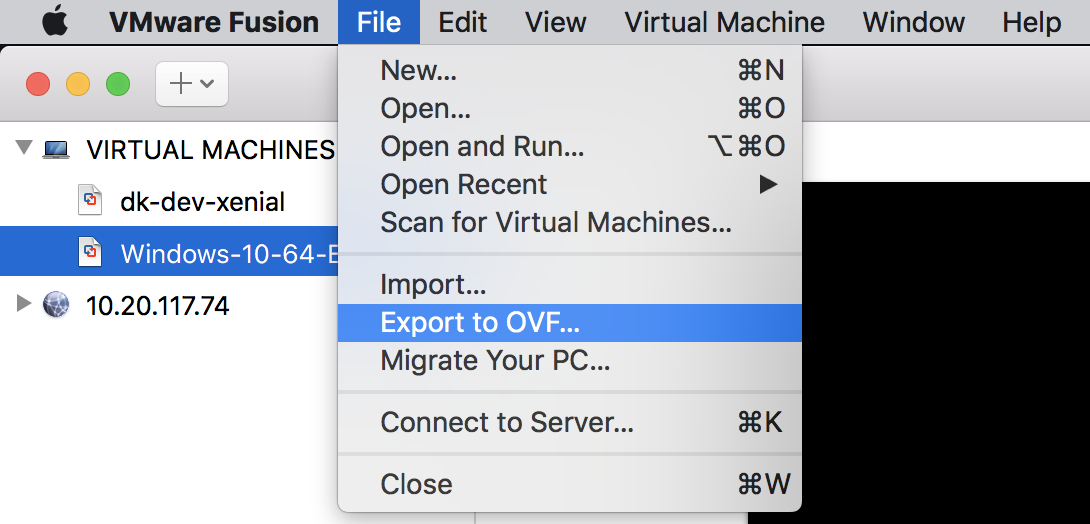Ovf Vmware For Mac
Overview
Jul 04, 2017 Export VM to OVF using OVF Tool. Export VM to the OVF process is similar to exporting VM to OVA. Enter ” ovftool.exe vi://” with the VM path and with a destination directory. By default, OVF Tool exports VM to.OVF file. So, we don’t need to specify the.OVF file extension here. Download the MacOs Mojave Image For VMware From our Google drive direct download links fast and easy. Experience the best way to Work on Mac Os through VMware workstation player. MacOS Mojave is of new forward-looking technologies and enhanced features to your Mac. Mac Os Mojave Installation Files MacOS Mojave Final zip. VMware Fusion delivers the best way to run Windows on the Mac, and the ultimate development and testing tool for building apps to run on any platform. Ready for macOS 11.0 Big Sur, Fusion 12 supports macOS 10.15 Catalina and includes new features for developers, IT admins and everyday users. Get OVF properties from the guestOS. When you configure an OVF environment, you can choose between CD-ROM and VMware-tools methods to transport information into the virtual machine: VMware tools. If you choose VMware tools transport method for OVF environment, according to the used OS type, the method to retrieve properties can vary a bit.
The VMware OVF Tool is a conversion program freely downloadable from VMware that assists in the distribution of virtual machines (VMs) and vApps, converting them between OVF, VMX and OVA formats. It also includes a command‑line facility to import and export OVF packages between environments or from third party suppliers. The OVF Tool is a command‑line interface (CLI) tool only.


OVF (Open Virtualisation Format) is a packaging standard created by leading virtualisation vendors. It is a platform independent, efficient, open packaging and distribution format for VMs.
VMX (the VM configuration file) is a simple text file with various parameters relating to the guest VM.
The OVA file extension is associated with Open Virtual Machine Format. Compared to the OVF file format, the OVA format contains all VM files and
*.ovffiles compressed into one single OVA archive file instead of many files in a folder.
Downloading the OVF Tool
You can download the OVF Tool via the following link:
Vmware For Mac Trial


You must have a VMware account to download the tool. You can download the OVF Tool for Windows 32-bit and 64-bit, Linux 32-bit and 64-bit, or Mac OS X.
After downloading and installing the OVF Tool, you must then go to the directory in which you installed the tool to run it. There is no icon or program logo on your desktop for the OVF Tool, so to launch it, you must use the command prompt. Go to the installation folder and run:
Getting started with the OVF Tool
The OVF Tool is a CLI tool, so some level of familiarity with CMD commands helps in using the tool. There are a number of help commands, which are a good source of information:
You can also find the OVF Tool User Guide at:
Basic import and export commands
You'll mainly use the OVF Tool to import (deploy) and export VMs or appliances into and out of your UKCloud environment.
The basic syntax to do this using the OVF Tool is:
Refer to the OVF Tool User Guide for further commands and switches.
Importing a .vmx file to a vApp template
To import a .vmx file:
Ovf Vmware For Mac Os
In your UKCloud environment, create a catalog to contain the vApp template.
For detailed instructions, see How to create a catalog.
Make sure you are in the correct directory, that is, the directory containing the file you want to import.
Run the following command:
Where:
vCloudTemplateindicates that you're uploading a new vApp templateacceptAllEulasindicates that you accept all end user licence agreementsoverwriteindicates that you're replacing an existing vApp with the new one being uploadedfilenameis the name of the.vmxfile that are importingusernameis your UKCloud Portal user IDapiURLis your vCloud API URL. This URL is different depending on the region in which your environment is located. For more information, see How to access VMware Cloud Director/vCloud Director through the vCloud API.computeServiceIDis the ID of your UKCloud compute service (sometimes also called an org or vOrg)vappTemplateis the ID of the vApp templatecatalogIDis the ID of the catalog in which the vApp template is located
For example:
Tip
Make sure you use double quotes (
') rather than single quotes (').The
.vmxfile is uploaded as a vApp template into your environment.In VMware Cloud Director/vCloud Director, expand the Recent Tasks panel to check the status.
Importing an .iso file to a vApp template
To upload an ISO image:
Make sure you are in the correct directory, that is, the directory containing the ISO file you want to import.
Run the following command:
Where:
sourceType(orst) indicates the type of the source file:ISOpathfilename.isois the full location of the source.isofile you want to importusernameis your UKCloud Portal user IDapiURLis your vCloud API URL. This URL is different depending on the region in which your environment is located. For more information, see How to access VMware Cloud Director/vCloud Director through the vCloud API.targetVDCis the VDC where you want to upload the filecomputeServiceIDis the ID of your UKCloud compute service (sometimes also called an org or vOrg)nameis the name to display for the file in VMware Cloud Director/vCloud DirectorcatalogIDis the ID of the catalog to which you want to upload the file
For example:
Tip
Make sure you use double quotes (
') rather than single quotes (').When the
ovftoolcommand has finished, the source and target locations are listed and then you're prompted for your username and password. When you are authenticated, the upload process is initiated.
Feedback
If you find a problem with this article, click Improve this Doc to make the change yourself or raise an issue in GitHub. If you have an idea for how we could improve any of our services, send an email to feedback@ukcloud.com.
You can import an Open Virtualization Format (OVF) virtual machine and run it in Fusion. You can import both .ovf and .ova files.
Fusion converts the virtual machine from OVF format to VMware runtime (.vmx) format.
OVF is a platform-independent, efficient, extensible, and open packaging and distribution format for virtual machines. For example, you can import OVF virtual machines exported from Workstation Pro into Fusion. You can import OVF 1.x files only.
You can also use the standalone OVF Tool to convert an OVF virtual machine to VMware runtime format. For information about using the OVF Tool, see the OVF Tool User Guide.
Vmware Ovf Macアドレス
Download or copy the OVF virtual machine file (.ovf or .ova file) to a location that is accessible to your Mac.
Procedure
- Select File > Import.
- Click Choose file and browse to the .ovf or .ova file and click Open.
- Type the name for the imported virtual machine in the Save As text box and indicate where to save it. The default destination is the Virtual Machines folder created by Fusion.
- Click Save. Fusion performs OVF specification conformance and virtual hardware compliance checks. A status bar indicates the progress of the import process.

